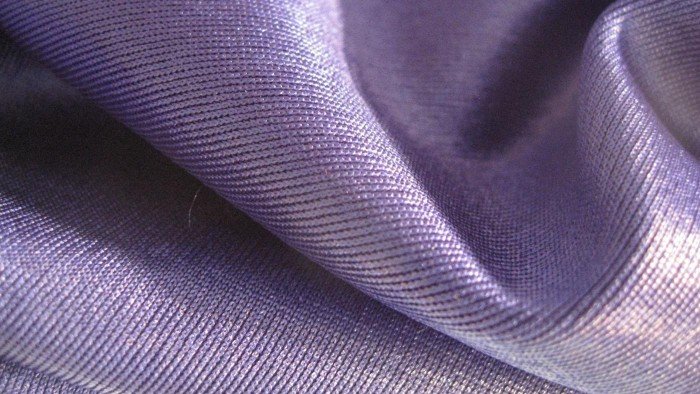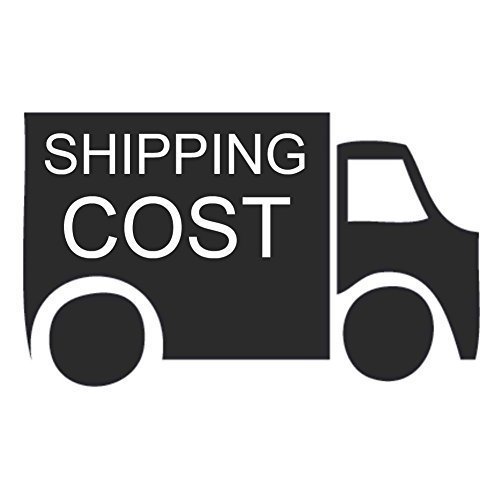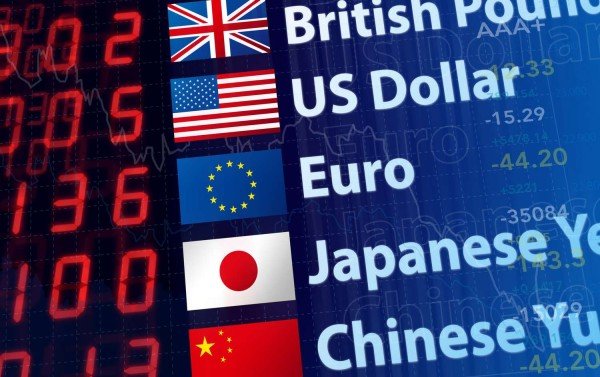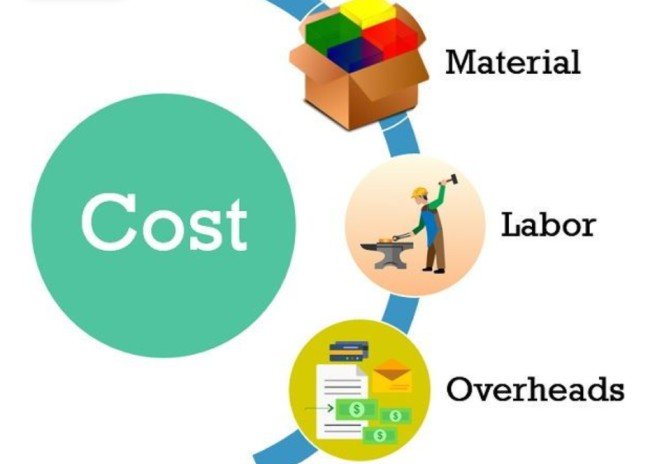
In the dynamic world of manufacturing, understanding the intricacies of cost is not just beneficial—it’s imperative. Whether you’re a budding entrepreneur or a seasoned business mogul, decoding the cost factors offers a strategic advantage. Every stitch in a laptop backpack, every zipper, and even the label sewn on its exterior comes with an associated cost. But it’s not just about the raw materials; it’s also about the labor that puts them together, the research that decides their placement, and the marketing that introduces the finished product to the world.
Moreover, pricing isn’t just about covering these costs. It’s a delicate balancing act. Price too high, and you risk alienating potential customers; price too low, and you might compromise profitability or even cast doubt on the product’s quality. Effective pricing strategies ensure that a business remains competitive in the market, fosters growth, and achieves sustained profitability. In the subsequent sections, we’ll dive deep into the myriad factors that influence the cost of manufacturing laptop backpacks and explore how savvy businesses strategize their pricing to navigate the complex global market.
1. Raw Materials

One of the foundational aspects of any manufacturing process is the raw materials. For laptop backpacks, the choice of material is not only essential for aesthetics but also for durability, functionality, and user comfort.
- Types of Materials Commonly Used:
- Nylon: Valued for its durability and resistance to abrasions, nylon is a common choice for many backpack manufacturers. It’s lightweight, water-resistant, and offers a balance between flexibility and strength.
- Polyester: Often more cost-effective than nylon, polyester is frequently used for its color retention properties, UV resistance, and resilience against wrinkles and shrinking.
- Leather: Synonymous with luxury, leather backpacks tend to be more premium. They offer a unique blend of style, durability, and tactile richness that synthetic materials often can’t match.
- Price Fluctuations and Sourcing Challenges:
- Raw material prices are not static; they can vary based on numerous factors like global supply-demand dynamics, geopolitical events, and even natural disasters. For instance, a disruption in the supply chain due to trade restrictions could drive up the cost of importing leather.
- Sourcing challenges also emerge from the need to ensure consistent quality. It’s not enough to find a material that fits the budget; it must also meet the brand’s standards in terms of texture, durability, and appearance.
- The Impact of Sustainable and Premium Materials on Cost:
- As global consciousness shifts towards sustainability, many manufacturers are exploring eco-friendly materials. Organic cotton, recycled nylon, or even innovative materials like Piñatex (derived from pineapple leaves) are entering the scene. While they reflect a brand’s commitment to the environment, they often come with a higher price tag due to the complexities involved in their production or sourcing.
- Premium materials, on the other hand, offer a unique selling proposition. They allow brands to position their products in the luxury segment, commanding higher prices. However, these materials, whether it’s high-grade leather or specialized waterproof fabrics, inherently drive up the manufacturing costs.
2. Labor Cost

Behind every meticulously sewn seam, every perfectly attached zipper, and every immaculately positioned pocket of a laptop backpack, there’s the invaluable contribution of labor. Labor costs, often one of the most significant expenditure categories in manufacturing, are influenced by a multitude of factors.
- Variation of Labor Costs Across Different Manufacturing Regions:
- Different regions around the world come with their own labor cost structures. For instance, manufacturing hubs in Southeast Asia have historically boasted lower labor costs compared to European or North American regions. However, these dynamics are always in flux, influenced by economic growth, currency valuations, and governmental policies. Understanding these regional variations is vital for a manufacturer’s sourcing strategy and overall cost optimization.
- Skilled vs. Unskilled Labor: The Balance in the Backpack Manufacturing Industry:
- The production of a laptop backpack isn’t monolithic. It requires a mix of skilled artisans (for detailed work or premium products) and unskilled laborers (for more standardized tasks). Skilled labor, given the expertise and training involved, invariably comes at a higher cost. However, their involvement ensures precision, reduces wastage, and often speeds up production times. On the other hand, unskilled labor, while more affordable, might be used for simpler tasks like material handling or basic assembly. Striking the right balance between these labor types is crucial to ensure both quality and cost-effectiveness.
- Ethical Considerations and Their Potential Cost Implications:
- Ethical manufacturing has become a focal point in the global discourse. Brands are increasingly held accountable for their supply chain practices, from fair wages to working conditions. Ensuring an ethically compliant manufacturing process might entail higher costs, be it through ensuring fair pay, investing in worker safety, or adopting sustainable practices. However, the long-term benefits, from brand reputation to customer loyalty, often outweigh the immediate cost implications. Moreover, several markets and consumer groups are willing to pay a premium for ethically produced goods, validating the investment in ethical labor practices.
3. Manufacturing Overheads

Beyond the direct costs associated with raw materials and labor, there’s an array of indirect costs, often grouped under ‘manufacturing overheads’. These are the expenses that manufacturers incur regardless of the number of backpacks produced. Understanding these overheads is pivotal in determining a product’s true cost and, subsequently, its pricing.
- Factory Setup: Rent, Utilities, and Maintenance:
- The physical space where production takes place carries significant costs. Rent varies widely based on location, with urban areas or established manufacturing zones generally commanding higher prices.
- Utilities, including electricity, water, and heating, are essential, especially when considering the energy-intensive machinery involved in backpack production.
- Maintenance is another vital factor. Keeping the factory in optimal condition, ensuring safety standards, and routinely addressing wear and tear are crucial to prevent production halts and maintain consistent output quality.
- Machinery and Equipment Depreciation:
- Backpack manufacturing requires specialized machinery, from sewing machines to material-cutting devices. While these machines have a considerable upfront cost, their value decreases over time, a concept known as depreciation. Accounting for this depreciation is crucial when determining product costs. Additionally, older machinery might be less efficient or require more frequent repairs, impacting both costs and production timelines.
- Quality Control and Testing Procedures:
- Ensuring each laptop backpack meets the brand’s standards of quality is non-negotiable. This involves setting up a quality control division, which inspects products at various stages of production. Such a setup can entail costs like salaries for quality control personnel, specialized equipment to test products and training programs.
- Testing procedures can vary based on the backpack’s intended use and market regulations. For instance, a backpack advertised as ‘waterproof’ might undergo rigorous water resistance tests. While these tests ensure product integrity and customer satisfaction, they also add to the manufacturing overheads.
4. Distribution and Logistics

Once a laptop backpack leaves the manufacturing line, its journey has only just begun. Getting the product from the factory to the end consumer involves a complex web of distribution and logistics, each stage carrying its own set of costs and considerations.
- Local vs. International Shipping Costs:
- Local Distribution: Transporting products within the same country or region typically involves lower costs, faster delivery times, and fewer regulatory hurdles. However, the scale and reach might be limited, and businesses might need to rely on an extensive local distribution network to cover vast territories.
- International Shipping: Taking products globally opens up a broader market but also brings in higher shipping costs. Factors such as mode of transport (air, sea, or land), shipping routes, and packaging play into these costs. Additionally, international shipping can be unpredictable, with potential delays and disruptions affecting delivery times and customer satisfaction.
- Impact of Global Trade Dynamics, Tariffs, and Customs:
- Trade Dynamics: Geopolitical events, trade agreements, or disputes can drastically affect international shipping. For instance, trade tensions can lead to restrictions or bans on certain products, affecting supply chains.
- Tariffs and Customs: Importing products into a new country often involves paying tariffs or duties. These costs vary depending on the product type, its value, and bilateral trade agreements. Additionally, navigating customs procedures can be intricate, and any discrepancies can lead to delays, fines, or confiscation of goods.
- The Role of Intermediaries: Distributors, Wholesalers, and Retailers:
- Distributors: These entities take on the responsibility of distributing the product across a particular region or country. They might cater to specific retailers or industries, and their margins add to the product’s final cost.
- Wholesalers: Typically involved in bulk purchases, wholesalers can help manufacturers move large volumes quickly. Their bulk-buying capability might offer manufacturers quicker liquidity, but they also add their markup.
- Retailers: The final link in the chain, retailers connect the product to the end consumer. Their markups, storefront costs, and sales strategies play a pivotal role in the product’s final pricing.
5. Regulatory and Compliance Costs

Navigating the labyrinth of regulations and ensuring compliance isn’t just about abiding by the law—it directly impacts the bottom line. For manufacturers of laptop backpacks, being cognizant of these costs and implications is essential, especially when operating in multiple markets.
- Meeting Safety and Quality Standards:
- Safety is paramount. Whether it’s ensuring that a backpack’s material is non-toxic or that its design won’t cause physical harm, adhering to safety standards is non-negotiable. Quality standards, on the other hand, might dictate parameters like durability, water resistance, or weight-bearing capacity. Meeting these standards can sometimes require investments in better materials or processes.
- Costs Associated with Certifications, Inspections, and Audits:
- Certifications: Acquiring certain certifications (like ISO for quality management or OEKO-TEX for textiles) can bolster a product’s credibility. However, obtaining and maintaining these certifications involves costs, be it in terms of fees, training, or required process adjustments.
- Inspections: Regular inspections, either by internal teams or external agencies, ensure that production consistently meets required standards. While vital, these inspections also come with associated costs.
- Audits: For businesses committed to ethical manufacturing, third-party audits might be conducted to verify labor practices, environmental impact, or supply chain transparency. These audits, while bolstering brand reputation, also involve financial outlays.
- Navigating Regulations in Different Markets:
- Different countries or regions have their own regulatory landscapes. What’s acceptable in one market might be prohibited in another. Understanding these nuances is vital. For instance, certain materials deemed safe in one country might be restricted in another due to environmental concerns.
- Labeling requirements can also vary. Some regions might require specific warnings, material disclosures, or care instructions to be clearly displayed on the product.
- Non-compliance isn’t just about potential fines or bans. It can lead to recalls, damage to brand reputation, and loss of consumer trust. Hence, the costs associated with ensuring regulatory compliance, while sometimes significant, are crucial to long-term success.
6. Economic Factors

The broader economic landscape plays an indispensable role in shaping the cost dynamics of manufacturing laptop backpacks. Fluctuations in the global economy, changes in currency values, or unexpected economic events can ripple through the production process, affecting everything from raw material prices to end-product pricing.
- Influence of Global Economic Conditions on Manufacturing Costs:
- Economic booms or recessions can drastically impact consumer demand. In prosperous times, consumers might gravitate towards premium products, whereas during downturns, they might prioritize cost-effective choices. This shifting demand can influence manufacturing decisions and associated costs.
- Global events, such as political unrest, trade wars, or even health crises like the COVID-19 pandemic, can disrupt supply chains, leading to increased costs or production delays.
- Commodities’ prices, which are closely tied to global economic conditions, can fluctuate, impacting the cost of raw materials for backpacks.
- Currency Exchange Rates and Their Impact on International Sourcing:
- With the global nature of manufacturing, sourcing materials or components from different countries is common. Fluctuations in currency exchange rates can influence the cost-effectiveness of these sourcing decisions. For example, a strengthening of the domestic currency might make imports cheaper, whereas a weakening could make them pricier.
- For businesses selling their products internationally, currency fluctuations can also impact profitability. A product priced in a weaker currency might become cheaper for foreign buyers, potentially driving up demand, but also affecting margins.
- Strategies to Hedge Against Economic Uncertainties:
- Forward Contracts: Businesses can lock in exchange rates for future transactions, providing certainty against volatile currency movements.
- Diversification: By diversifying supply chains and sourcing from multiple regions, manufacturers can mitigate risks associated with economic instability in any one region.
- Flexible Manufacturing: Adopting flexible manufacturing strategies can allow businesses to quickly adjust production volumes based on economic conditions, reducing potential losses during downturns.
- Building Reserves: Financial prudence, like maintaining a robust cash reserve, can help businesses navigate economic downturns without having to compromise on quality or cut corners in production.
7. Future Predictions

The ever-evolving landscape of manufacturing demands foresight and adaptability. For laptop backpack manufacturers, anticipating future shifts and adjusting strategies in real time can be the difference between sustained growth and stagnation.
- Anticipating Potential Shifts in Raw Material Prices or Labor Costs:
- Market Research: Staying abreast of global economic indicators, geopolitical events, and industry-specific news can provide early signals of potential shifts in raw material prices. For instance, a sudden surge in demand for a particular material or geopolitical tensions in material-rich regions can hint at future price hikes.
- Labor Dynamics: Changes in labor laws, minimum wage regulations, or even broader socio-economic shifts in manufacturing hubs can influence labor costs. Regularly reviewing labor dynamics and adjusting sourcing strategies accordingly can help preempt significant cost escalations.
- The Role of Automation and Technology in Reducing Manufacturing Costs:
- Automation: As technology advances, automating certain manufacturing processes can lead to significant cost savings. Whether it’s automated cutting machines for materials or AI-driven quality control systems, integrating technology can drive efficiency, reduce wastage, and ensure consistency.
- Digital Twins & Simulation: Modern manufacturing can benefit from creating digital replicas of physical assets, allowing for simulations and testing in virtual environments before real-world implementation. This can lead to optimized processes, reduced errors, and cost savings.
- Supply Chain Technology: Integrating tech solutions like blockchain can offer greater transparency, reduce fraud, and optimize inventory management, all contributing to cost reductions.
8. Conclusion

The intricate dance of manufacturing, particularly in the realm of laptop backpacks, is one of constant evolution. As we’ve delved into the myriad facets of this industry, from raw materials to global economic factors, one truth stands clear: adaptability is the key to enduring success. Manufacturers must not only stay attuned to the present but also cast their gaze forward, anticipating the shifts and nuances of the future landscape. Technology, with its promise of automation and efficiency, offers a beacon of potential, yet it’s the human element—the foresight, the strategy, the adaptability—that will truly shape the trajectory of this industry. As the world continues its march into the future, so too must the world of laptop backpack manufacturing, ever-evolving, ever-adapting, and always striving for excellence.
In your quest for the finest laptop backpacks, you’ve arrived at the right destination. At Airscape Textile, we merge innovation with tradition, crafting backpacks that aren’t just functional but also stand as a testament to impeccable quality and design. Our commitment to excellence ensures that each product we deliver meets the highest standards, ready to cater to the diverse needs of the global market. So, whether you’re looking for cutting-edge designs, sustainable materials, or bespoke solutions, trust Airscape Textile to be your partner in success. Let’s embark on this journey together, shaping the future of laptop backpacks one stitch at a time. Contact us by filling out the form on this page or just click here.


